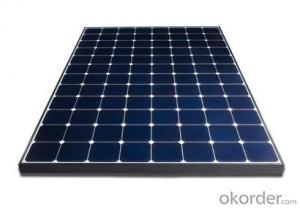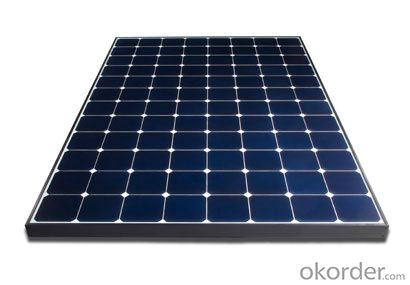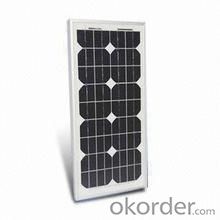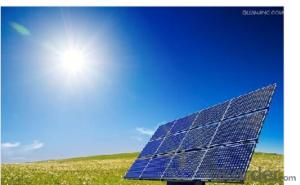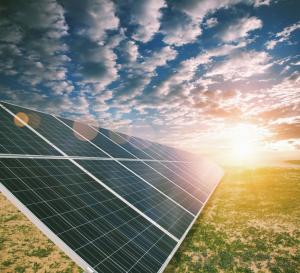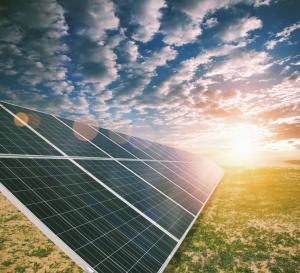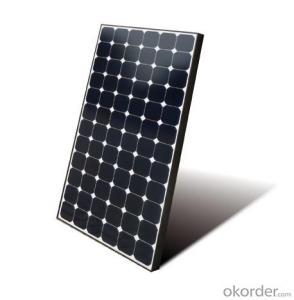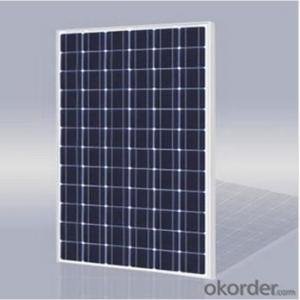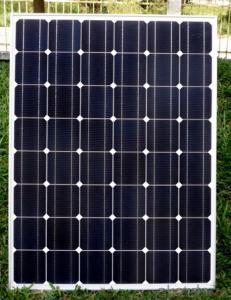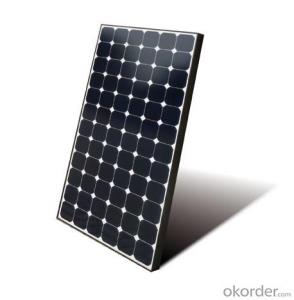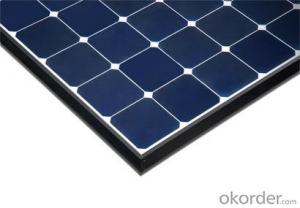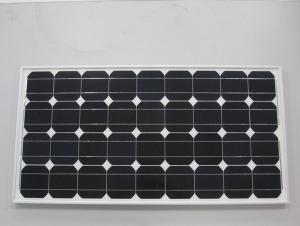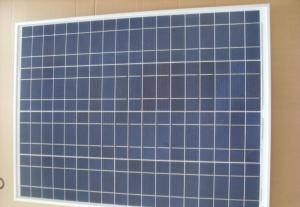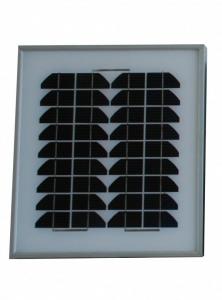Solar Panels Asheville - CNBM Poly Solar Panel 280W A Grade with Factory Price
- Loading Port:
- Shanghai
- Payment Terms:
- TT OR LC
- Min Order Qty:
- 500 watt
- Supply Capability:
- 100000 watt/month
OKorder Service Pledge
OKorder Financial Service
You Might Also Like
Specification
CNBM Poly Solar Panel 280W A Grade with Factory Price
Production description
A solar panel is a collection of solar cells. Lots of small solar cells spread over a large area can work together to provide enough power to be useful. The more light that hits a cell, the more electricity it produces, so spacecraft are usually designed with solar panels that can always be pointed at the Sun even as the rest of the body of the spacecraft moves around, much as a tank turret can be aimed independently of where the tank is going.
A photovoltaic (in short PV) module is a packaged, connected assembly of typically 6×10 solar cells. Solar Photovoltaic panels constitute the solar array of a photovoltaic system that generates and supplies solar electricityin commercial and residential applications. Each module is rated by its DC output power under standard test conditions, and typically ranges from 100 to 365 watts. The efficiency of a module determines the area of a module given the same rated output – an 8% efficient 230 watt module will have twice the area of a 16% efficient 230 watt module.
solar modules use light energy (photons) from the sun to generate electricity through the photovoltaic effect. The majority of modules use wafer-based crystalline silicon cells or thin-film cells based on cadmium telluride or silicon. The structural (load carrying) member of a module can either be the top layer or the back layer. Cells must also be protected from mechanical damage and moisture. Most solar modules are rigid, but semi-flexible ones are available, based on thin-film cells. These early solar modules were first used in space in 1958.
Depending on construction, photovoltaic modules can produce electricity from a range of frequencies of light, but usually cannot cover the entire solar range (specifically, ultraviolet, infrared and low or diffused light). Hence, much of the incident sunlight energy is wasted by solar modules, and they can give far higher efficiencies if illuminated with monochromatic light. Therefore, another design concept is to split the light into different wavelength ranges and direct the beams onto different cells tuned to those ranges.[citation needed] This has been projected to be capable of raising efficiency by 50%. Scientists from Spectrolab, a subsidiary of Boeing, have reported development of multijunction solar cells with an efficiency of more than 40%, a new world record for solar photovoltaic cells.[2] The Spectrolab scientists also predict that concentrator solar cells could achieve efficiencies of more than 45% or even 50% in the future, with theoretical efficiencies being about 58% in cells with more than three junctions.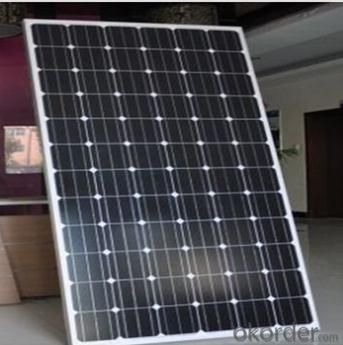
Application
Aerospace
Residential
Commercial
Large solar power plant
Distributed plant
Product Feature
1.A grade high efficiency solar cells.
2.TUV/UL/CE/CEC etc
3.Fast shippment
4.25 years warranty
5.OEM
Package
24pcs into one carton, 312pcs into a 20 foot container, 728pcs into a 40 foot container.
- Q: Can solar panels be installed on a telecommunications tower or antenna?
- Yes, solar panels can be installed on a telecommunications tower or antenna. This can help provide a reliable and sustainable source of energy for powering the tower's equipment and reducing its dependence on traditional energy sources.
- Q: Can solar panels be installed in shaded areas?
- Solar panels can be installed in shaded areas, but their efficiency and power output will be significantly reduced compared to panels installed in direct sunlight.
- Q: I've built a set of lights, fan and a clock running on only solar power. The problem is, i have to present it tomorrow and when the light isn't particularly strong it won't work too well. It works flawlessly when its under my desk light on max brightness but the only the light works when i set it to low brightness. Currently, tomorrow in my city it won't be sunny so any advice for trying to make it work under low light?
- Solar panels are designed to be used to recharge a battery or series of batteries, not for direct power. That is the inherent weakness of solar systems. The only way to have it work in low light conditions if to have several cells wired in series and have a voltage regulator to limit the amount of voltage that can be supplied. Other than that, add a battery and a charging circuit that the cell would supply power to.
- Q: Can solar panels be used in areas with frequent power outages?
- Yes, solar panels can be used in areas with frequent power outages. Solar panels generate electricity from sunlight, so as long as there is sunlight available, they can continue to produce power even during power outages. Additionally, solar panels can be equipped with battery storage systems to store excess energy generated during the day for use during periods of low sunlight or power outages, making them a reliable source of electricity in areas with frequent power disruptions.
- Q: Are there solar panel systems that I can plug directly into my house to help reduce my electricity bill? If so, are they very expensive? Any help would be greatly appreciated!
- As per the question, the answer is no. Solar panels are available, they are expensive, they can reduce your energy bill, you can get up to 30% of the expense back from your taxes, but they must be installed by a qualified electrician or solar panel installer to work properly.
- Q: How efficient are solar panels when it comes to turning light into energy? If it's not 00%, why? Can it be improved? Also, how do solar panels work, exactly.
- Solar panel refers to a panel designed to absorb sunlight as a source of energy for generating electicity or heating.solar module use sunlight to generate electicity through photovoltaic effect.The efficiency of solar panel is 5-8%,there are a few solar panels available that exceed 9% efficiency.
- Q: what are the main minerals that are used in making solar panels. and where in the world are those minrelas usually found
- Not minerals. Elements. Silicon. Found everywhere. Group III elements for doping. Group V elements for doping.
- Q: I have seen quite a few different websites that talk about building your own solar panels for around $200. I wanted to know if anyone has had any experience with this before I decide to try it myself. It would be very helpful to know what I can expect from such an inexpensive setup; what kind of electronics or appliances would I be able to power. Realistically what can I expect from a $200 setup, and what would I need to power say a whole bedroom (clock, regular sized TV, PC, ext.).
- Hello, okorder . Look at some videos ( There are few hundred of them ) Basically though they all stay with the same idea or plan. Look at how they wire them and get more familiar with what they are running on them depending upon how much wattage panel they are running. I seen a 400 watt system costing about 600 dollars US currency. Because two 200 watt panels = 50.00 each and the diverter = 50 and the charge controller = another 50.00 at the least. Then you have wiring and some deep cycle 2 or 6 volt batteries to loop up which is extra cost if none laying around to use. Check-out youtube though for the best advice and opinion you can give yourself then maybe look at a few solar panel websites which sell Solar kits for some more price ideas. To run a laptop i assume you will need atleast 400 watts and 2 to 4 ,twelve volt batteries which are deep cycle and it might take 3 to 5 days to charge up your batteries but they should charge laptop battery no problem without much loss if you keep laptop charged often. TV is power hungry and you will need something like a $500.00 system for that. 000 watts etc. Tv just drains the battery bank way too fast. So to answer your question about what you can get for 200 bucks. Maybe a 80 watt kit system for about 250 bucks complete except batteries. with 80 watts you could power some cool nighttime night lighting with super bright LEDS or LED light strips which are about 0.3 watts per LED or 5 watt LED cabinet lights work well So for a 80 watt system you probably only want one 2 volt battery or else will take alot longer to charge on such low wattage. But you could run LED lighting for nighttime lighting and easily save 250 dollars in a year off your bill by charging phone from it, using LED lights and other low wattage devices if utilized daily. Just don't draw more power than it makes and it should be ok. Goodluck with your research.
- Q: Just curious.
- Since you said does instead of do I think it would be fruitless trying to explain it...
- Q: i trying to make a solar panel. right now i dont have money to go and buy a copper sheet. so can i make it out of aluminum foil. if there is a way please tell me how. and what do i use for wires. i making this to charge batteries.
- Homemade okorder
Send your message to us
Solar Panels Asheville - CNBM Poly Solar Panel 280W A Grade with Factory Price
- Loading Port:
- Shanghai
- Payment Terms:
- TT OR LC
- Min Order Qty:
- 500 watt
- Supply Capability:
- 100000 watt/month
OKorder Service Pledge
OKorder Financial Service
Similar products
Hot products
Hot Searches
